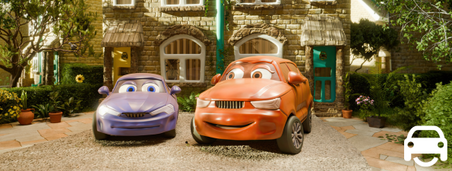Surge in Young Driver Insurance Costs: Tips to Save Money

For many young drivers, motor insurance has become as expensive as the car they're trying to insure. It's a problem that risks putting a generation off motoring. Below we tell you why insurance has never been so expensive for young drivers, what it costs and how to save money on it.
What ages of young driver are we talking about?
Anyone aged from 17-24 years, a range that includes new drivers and others with only a few years' experience.
How much more expensive is car insurance for everyone?
According to the Association of British Insurers, premiums increased by 25% in 2023 compared with 2022. However, comparison sites paint a bleaker picture. For example, Go.Compare says they increased by 30% during 2023 to stand at £447 today but Confused.com by 43% to £941. Unfortunately, even that is a figure young drivers won't recognise…
How much more expensive is car insurance for young drivers?
Figures vary between insurers but according to Confused.com, the average premium for a 17-year-old is £2,919 compared with £1,612 last year, a rise of 81%. Meanwhile, 18-year olds are actually paying more at £3,145. Even drivers who would expect to pay less due to building up a no-claims bonus are paying more now than they were five years ago, says the insurer. For example, 22-year-olds are paying £667 more than they were paying when they were 17. Their average premium is now £1,930 when five years ago they were paying £1263.
Quotezone.co.uk, a rival comparison site, reports that 17-year-old drivers are paying up to 77% more for their car insurance this year, bringing their average premium to £3,496. Eighteen-year olds are paying 60% more (£2,986) and 19-year olds, 47% more (£2,435).
Are young driver insurance premiums the same across the country?
There are clear regional differences between average premiums. For example, according to Quotezone, for 18 to 24-year-old drivers they are highest in London (£2,811), followed by the West Midlands (£2,392) and Yorkshire (£2,327). At the other end of the price spectrum, the cheapest region is Northern Ireland (£1,359), followed by South West England (£1,714) and Wales (£1,835).
Why has insurance for young drivers become more expensive?
Young drivers are more likely to be involved in an accident and tend to make more expensive claims than older ones. Confused.com says the average claim value for under 25s is £2,300 but for over 65s, it’s £1,800. Across all ages the ABI says that since 2017, claims costs have risen by 23% in real terms. Reasons include general inflation, the high prices of replacement parts, delays in bodyshops meaning hire cars must be provided and big falls in insurers' investment income.
What are the consequences of rising car insurance premiums?
They're putting driving out of reach of many young people. Figures released by the DVLA in 2021 showed that the number of people aged 16 to 25 holding a full licence had fallen by 350,000 during the previous year to the lowest number on records dating back to 2012. The covid epidemic when driving lessons and test were suspended was largely to blame but it was a continuation of a trend detected in 2019 by the Department for Transport. It found that 17 to 20-year-olds in England were discouraged from driving by the costs of learning (41%), buying a car (31%) and insuring it (30%).
Another, more troubling, consequence is the rise in the number of uninsured young drivers. IAM Road Smart, a safety charity, says the number of drivers aged 17-20 with new NI10 licence endorsements for driving without insurance increased by 118% between 2021 and 2023 – from 2,902 to 6,316. The charity says the increase 'is likely a consequence of the soaring costs of insurance premiums over the last 18 months.' It is calling on the government to halve the 12% standard rate of insurance premium tax for young drivers, to zero rate it for those who have completed an approved driving course and to update the current road safety strategy with a focus on skills development and training
How can I reduce my car insurance premium?
· Shop around comparison sites and high street brokers to ensure you're getting a competitive price.
· Consider being a named driver on a parent's policy but remember you won't earn any no-claims bonus that will make your insurance cheaper the next time.
· Pay a higher excess.
· Avoid buying a car with modifications such as a rear spoiler or non-standard wheels.
· Consider having a black box fitted to your car that monitors your driving behaviour.
· Don't over-estimate your annual mileage.
· Before you're 17, take driver training with an organisation such as Young Driver. It claims that only 3.2% of its 'graduates' have an accident in the first six months of passing their test compared with the national average of 20%. Training will reduce your chances of having an accident or getting points on your licence, which will benefit your renewal premium.
Any other suggestions?
Buy a car in a low insurance category. All cars are risk assesssed and awarded a so-called 'group rating' from 1 to 50, with one being the cheapest to insure. That said, there's not much separating groups 1-3 since other factors such as your address, whether it's parked on your driveway or on the road and how you plan to use it all exert a strong influence on the premium you pay.
10 cheapest cars for young drivers to insure*
1. Citroën C1
2. Ford KA
3. Kia Picanto
4. Hyundai i20
5. Fiat 500
6. Peugeot 107
7. Mini Cooper
8. Vauxhall Adam
9. Volkswagen Up!
10. Toyota Aygo
*Source: Go.Compare, May 2024





